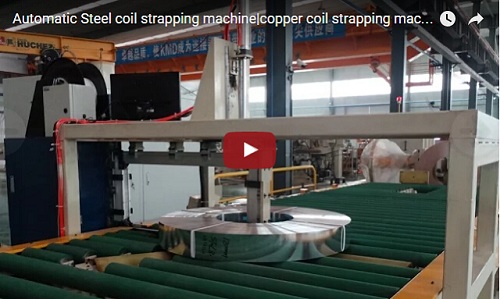Integrating Coil Packaging Lines with Slitters for Enhanced Efficiency
Automated coil packaging lines play a crucial role in modern slitting operations by seamlessly handling slit coils, reducing manual labor requirements, and increasing overall throughput. Integrating the packaging process directly with the slitting line exit streamlines the workflow from master coil to finished, ready-to-ship product. This guide explores the key components and processes involved in such integrated systems.

Automatic coil packaging machine lines are engineered to connect directly downstream from a slitting line, automating the handling and packaging of slit coils. This automation minimizes manual intervention, thereby enhancing operational speed and safety. System configurations can be tailored based on specific requirements, including coil dimensions, plant layout constraints, and desired levels of automation, ranging from semi-automatic to fully integrated solutions.
Key Components of an Integrated Coil Packaging Line
A typical integrated system involves several key pieces of equipment working in sequence:
1. Coil Transfer Car
Immediately following the slitter's recoiler, a transfer coil car is often employed.
- Function: Moves individual slit coils away from the recoiler/winding roller.
- Features: Typically equipped with height adjustment capabilities (up/down) to align precisely with both the recoiler and the subsequent handling station (e.g., turnstile). Facilitates safe and efficient initial transfer.
2. Turnstile
Acts as a buffer and sequencing station between the slitter and the main packaging line.
- Function: Receives coils from the transfer car and holds multiple coils simultaneously. This buffering capacity allows the packaging line to operate continuously, even if there are slight speed variations or brief stops upstream or downstream.
- Configuration: Commonly available with two, three, or four arms to accommodate varying buffering needs and line speeds.

3. Downender / Tilter
An essential device for reorienting coils for packaging.
- Function: Safely picks up a single coil (typically in an "eye-to-sky" orientation) from the turnstile arm, rotates it by 90 degrees ("eye-to-horizon"), and places it onto the packaging line conveyor.
- Operation: Fully automated process, ensuring correct orientation for subsequent strapping or wrapping operations.
4. Strapping Machines
Secure the slit coils using steel or plastic strapping.
- Function: Apply radial straps around the circumference of the coil to prevent unwinding. Depending on requirements, eye-through strapping might also be applied.
- Automation: Modern strapping heads are programmable for fully automatic operation. Integration with a turntable allows for precise strap placement at multiple points (e.g., 3, 4, or 6 straps per coil) by rotating the coil beneath the strapping head.
5. Coil Stacker
Used when multiple coils need to be stacked before final palletizing.
- Function: Lifts individual packaged coils from the conveyor and places them onto a designated stacking position, often directly onto a pallet.
- Mechanism: Can utilize various gripping methods, including outer diameter (OD) clamps, fork arms, magnets (for ferrous materials), or vacuum lifters, depending on coil size, weight, and surface characteristics.
6. Stacking Turntable / Rotary Table
Manages the positioning of stacked coils or pallets.
- Function: Rotates a pallet or stacking station to allow access for the coil stacker or to position the completed stack for exit. Often designed with multiple positions (e.g., 6 or 8) to facilitate continuous operation or different downstream processes. It transfers the fully stacked pallet onto the exit conveyor system.
7. Pallet Strapping Station
Secures the entire stack of coils to the pallet for stable transport.
- Function: Applies straps vertically or horizontally, unitizing the stacked coils with the pallet base. This is typically an automated process integrated into the exit conveyor section.
Benefits of Integration
Integrating coil packaging directly with slitting lines offers significant advantages:
- Increased Throughput: Automating the transfer and packaging keeps pace with slitting speeds.
- Reduced Labor: Minimizes manual handling, freeing up personnel for other tasks.
- Enhanced Safety: Reduces risks associated with manually moving heavy coils.
- Improved Package Quality: Ensures consistent and secure packaging, protecting the product.
- Better Space Utilization: Creates a more streamlined and potentially compact workflow.
By automating the steps from the slitter exit through to the final packaged pallet, manufacturers can achieve greater efficiency, safety, and consistency in their coil processing operations.
Explore more coil packing line solutions: https://www.fhopepack.com/Automatic_Coil_packing_machinery.html